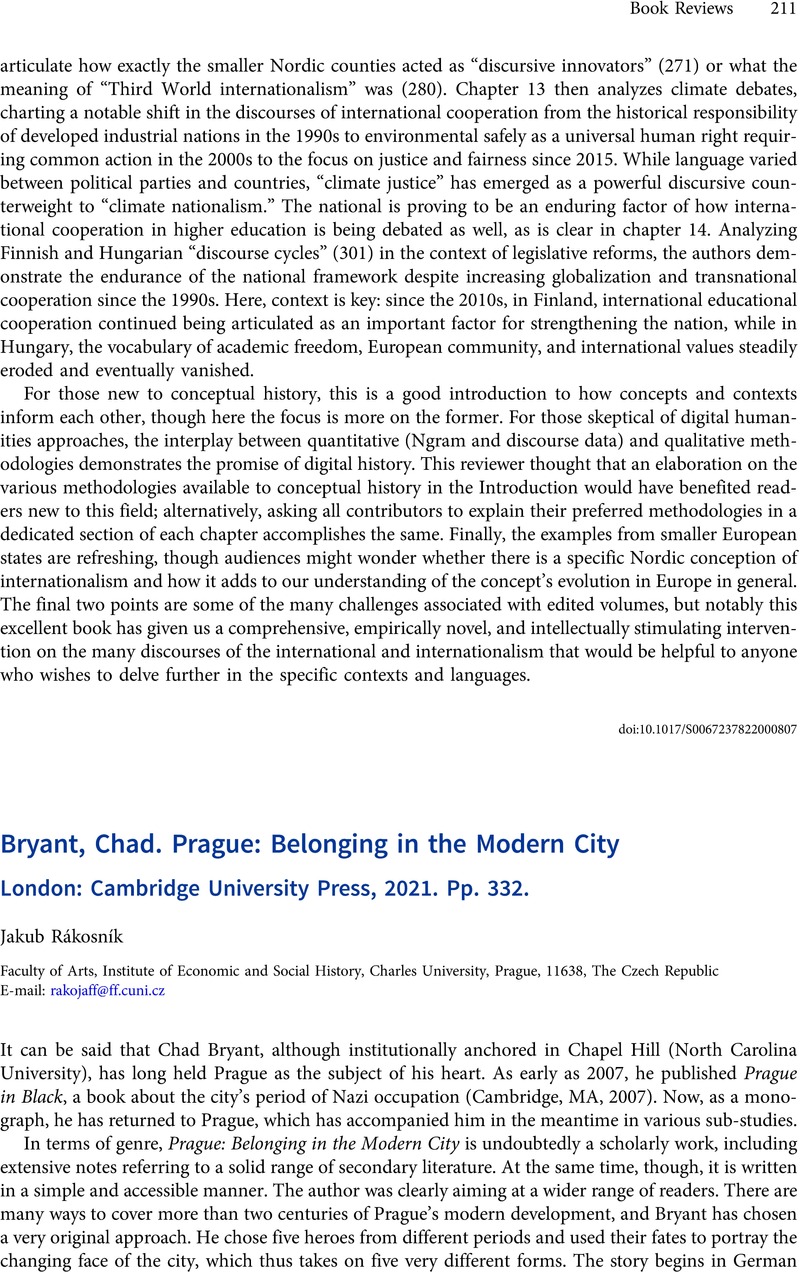No CrossRef data available.
Article contents
Chad Bryant. Prague: Belonging in the Modern City London: Cambridge University Press, 2021. Pp. 332.
Review products
Chad Bryant. Prague: Belonging in the Modern City London: Cambridge University Press, 2021. Pp. 332.
Published online by Cambridge University Press: 13 February 2023
Abstract
An abstract is not available for this content so a preview has been provided. Please use the Get access link above for information on how to access this content.

- Type
- Book Review: General
- Information
- Copyright
- Copyright © The Author(s), 2023. Published by Cambridge University Press on behalf of the Center for Austrian Studies, University of Minnesota



